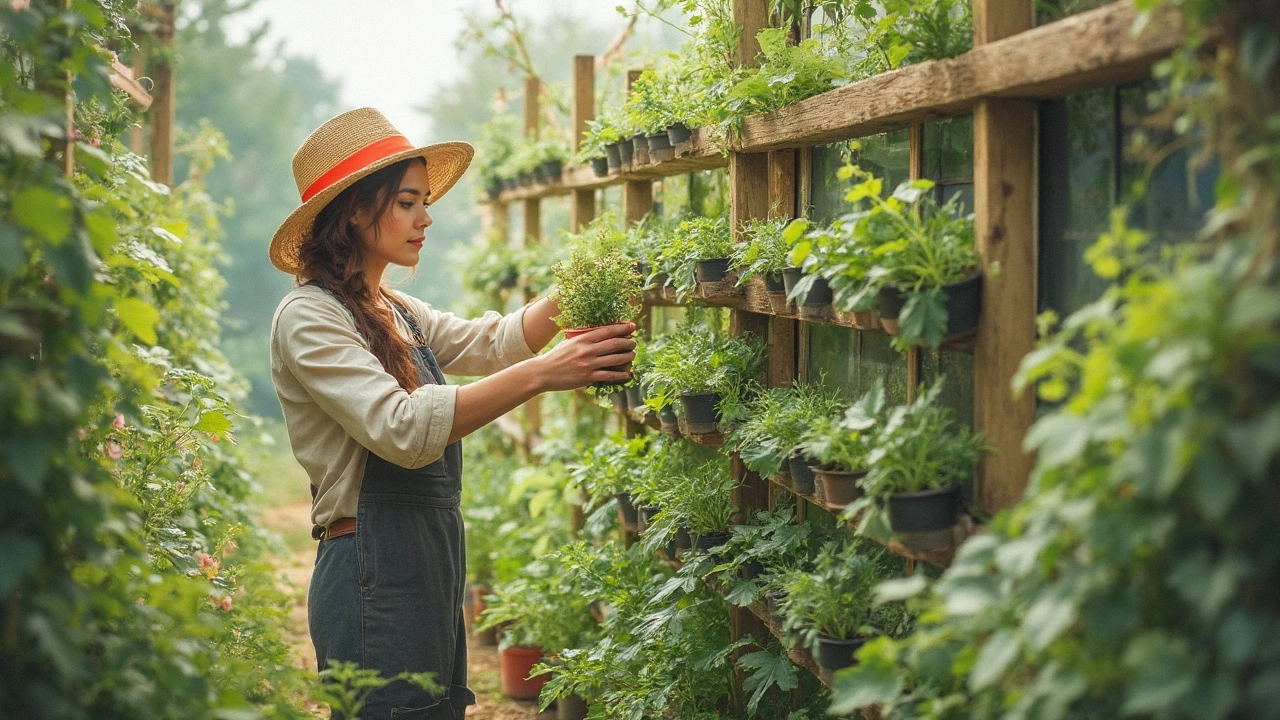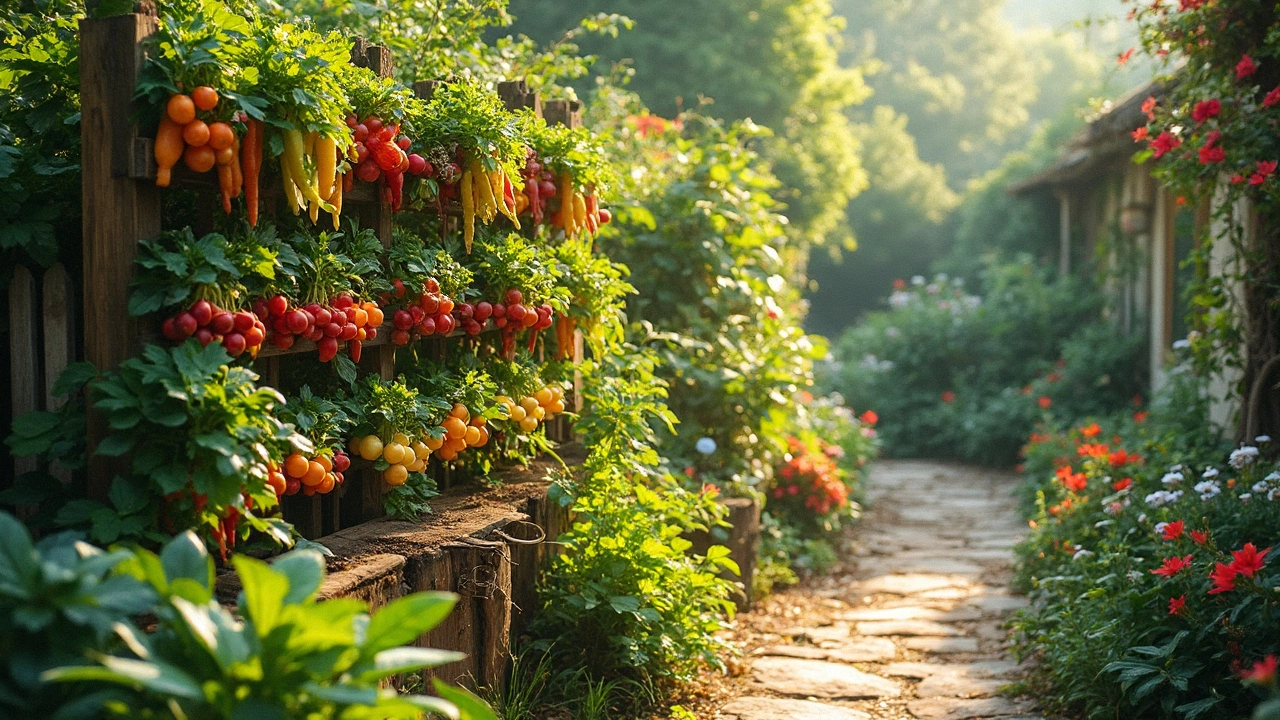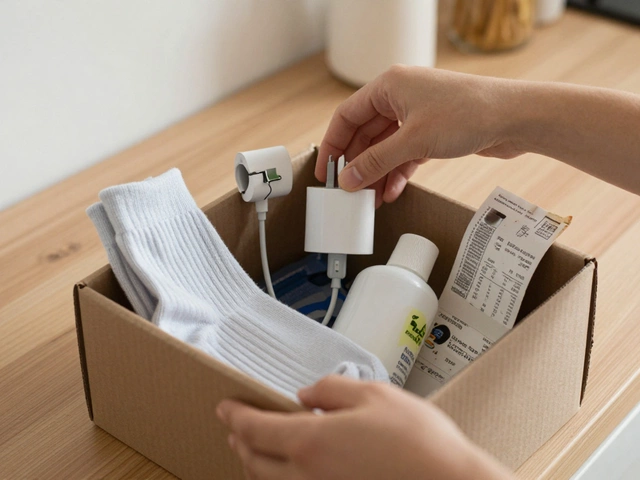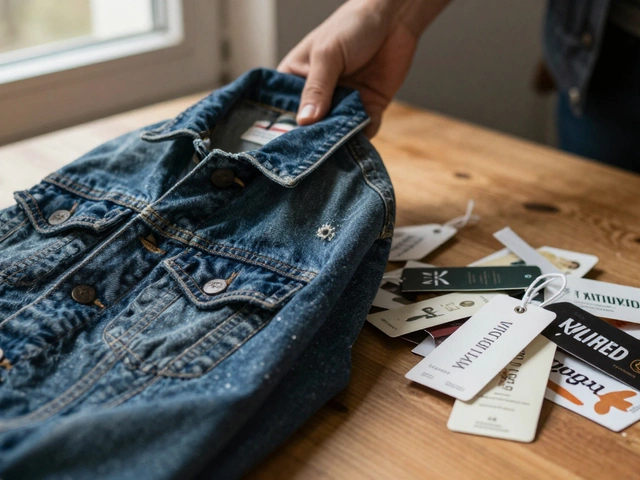Growing a productive garden doesn't require acres of land, and one clever trick can make your tiny backyard thrive—vertical gardening. Think of it as stacking plants to the sky instead of spreading them across the ground. It's perfect for squeezing more veggies and fruits out of a tight space.
This isn't just about sticking a few pots on a shelf. We're talking trellis artistry, smart plant selection, and clever layout tricks. You can grow more than you'd imagine, without needing to be an expert gardener. If you're ready to boost your garden's output, let's dig into the details—pun intended.
- Understand Vertical Gardening
- Choosing the Right Plants
- Employing Companion Planting
- Using Trellis Systems Effectively
Understand Vertical Gardening
Vertical gardening is a fantastic way to make the most of your small garden space. It's all about using your garden's height instead of relying on the limited ground space. This technique is not just for small apartments balconies; it's perfect for anyone looking to maximize yield even if they don't have a lot of land.
The basic idea is simple: instead of letting plants sprawl across your yard, you get them to grow up. This is great news for anyone wanting to grow more veggies, fruits, or even flowers without the luxury of sprawling fields.
One key benefit of vertical gardening is improved air circulation. This can lead to less disease and pest problems for your plants. Plus, when plants grow up instead of out, they're easier to harvest and maintain. No more crawling through tight spaces!
Want to get started? Here are a couple of quick steps:
- Choose sturdy structures, like trellises or stakes, for climbing plants like cucumbers, peas, and pole beans.
- For hanging pots or vertical planters, opt for more compact crops, like lettuce or strawberries.
- Use wall-mounted planters to create a lush green wall, utilizing herbs or smaller flowering plants.
It's time to think vertically and turn your small space into a thriving green oasis. Whether you're into veggies or flowers, vertical gardening can boost your garden’s efficiency in a way that might surprise you.
Choosing the Right Plants
When you’re working with a small garden, every inch counts. So, selecting the right plants is like picking your dream team for a sports event. You want those that give the best results with the least fuss and space. Some plants naturally grow upward, making them ideal for vertical gardening. Peas, pole beans, and cucumbers love to climb and show impressive yields when reaching for the sky.
Besides space-friendly climbers, think about plants with shorter maturity times so you can enjoy results sooner and possibly squeeze in another round of planting in the same season. Radishes, lettuce, and spinach all grow quickly and don't mind sharing root space with taller plants.
Herbs are another great option. They don't need much room to flourish and can thrive in hanging pots or within small gaps in your garden setup. Plus, having fresh basil or mint at arm’s reach is perfect for spontaneous kitchen adventures.
Plan your garden around these vertical and fast-growing choices. Start small, mix the go-getters with some quick crops, and you’ll see your garden skyrocket in productivity—literally.

Employing Companion Planting
Transform your small garden into a powerhouse of productivity with the age-old method of companion planting. It's about pairing plants that help each other grow, boost yield, and ward off pests. It’s like the plant equivalent of an awesome roommate situation.
So, how does it work? Some plants, when grown together, improve each other’s growth. Creatures that bother one plant might not touch its partner. For instance, plant basil next to tomatoes to repel insects and enhance the tomatoes' growth and flavor. That's like a win-win-win.
"Plants are best friends when their partnerships enrich the soil, support pest resistance, and improve yields," notes expert gardener and author Monty Don.
To get started, consider these classic combinations:
- Carrots and onions: The onion’s strong smell masks the carrots, keeping carrot flies away. Meanwhile, the carrots help stop the onion flies.
- Corn and beans: Beans climb the corn stalks, and beans fix nitrogen into the soil, nourishing the corn.
- Cucumbers and radishes: Plant radishes around cucumbers to deter pests, particularly cucumber beetles.
Besides pairing, think about spacing. Overcrowding in a small garden can lead to competition for resources, which nobody wants. Give your plants enough room to stretch out, but close enough to be friends.
| Plant Pair | Benefits |
|---|---|
| Tomato & Basil | Repels pests, enhances flavor |
| Corn & Beans | Naturally support each other, enrich soil |
| Carrot & Onion | Pest control, optimize space |
Employing these strategies in your garden maximizes your yield and keeps your plants healthier. It's truly the secret sauce for getting more out of your gardening efforts in a small garden. Try it out, and you might just make your garden famous among your friends!
Using Trellis Systems Effectively
When it comes to getting more out of your small garden, going vertical with trellis systems is like finding hidden storage space in a tiny apartment. You’d be surprised how much more you can grow by simply giving your plants some upward mobility.
First things first, let's talk materials. You don't need anything fancy. Bamboo stakes, wooden frames, or even some strong netting can work wonders. The key is to choose something sturdy since a thriving plant can get pretty heavy.
Now, which plants are best for the trellis treatment? Here you’re looking at climbers and vines. Peas, pole beans, cucumbers, and even tomatoes love to climb. They not only save space but can also get better sunlight and air, which equals happier, healthier plants.
Setting up your trellis systems is as simple as it gets. Just make sure they're anchored well into the ground or pots. An unstable trellis can turn your plant dream into a broken vine nightmare pretty quickly.
Here’s a quick guide to setting it up:
- Pick your spot: Ensure your trellis is in a place with ample sunlight.
- Stability check: Secure your trellis firmly.
- Train your plants: As your plant grows, gently guide it up the trellis.
If you’re a fan of numbers, get this: a well-placed trellis can increase yield by up to 20% because it allows you to grow more in the same square footage. Plus, it makes harvesting a breeze!
With a bit of creativity and the right set-up, your small garden can produce impressive yields, proving that size doesn't always matter.










